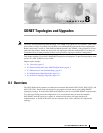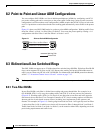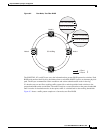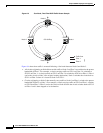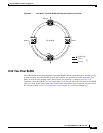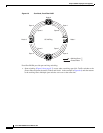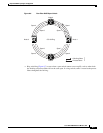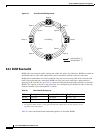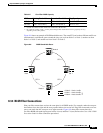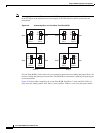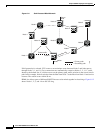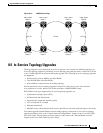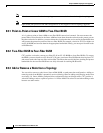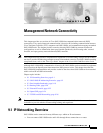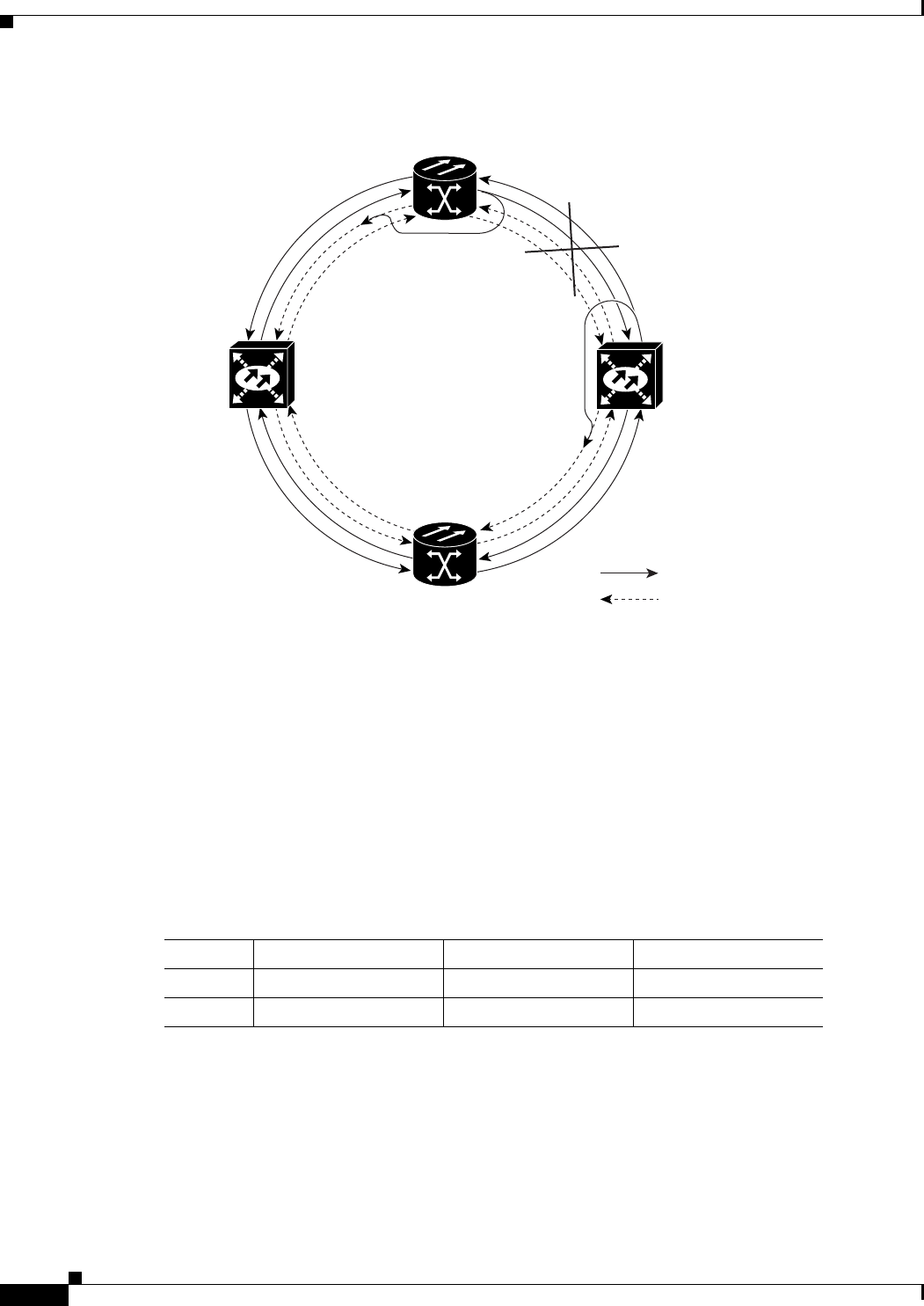
8-8
Cisco ONS 15600 Reference Manual, R7.2
Chapter 8 SONET Topologies and Upgrades
8.3.3 BLSR Bandwidth
Figure 8-7 Four-Fiber BLSR Ring Switch
8.3.3 BLSR Bandwidth
BLSR nodes can terminate traffic coming from either side of the ring. Therefore, BLSRs are suited for
distributed node-to-node traffic applications such as interoffice networks and access networks.
BLSRs allow bandwidth to be reused around the ring and can carry more traffic than a network with
traffic flowing through one central hub. BLSRs can also carry more traffic than a path protection
operating at the same OC-N rate. Table 8-1 shows the bidirectional bandwidth capacities of two-fiber
BLSRs. The capacity is the OC-N rate divided by two, multiplied by the number of nodes in the ring
minus the number of pass-through STS-1 circuits.
Table 8-2 shows the bidirectional bandwidth capacities of four-fiber BLSRs.
Node 0
Node 1
Node 2
Node 3
Span 1
Span 2Span 3
Span 4
Span 8
Span 7Span 6
Span 5
OC-48 Ring
= Working fibers
= Protect fibers
131784
Table 8-1 Two-Fiber BLSR Capacity
OC Rate Working Bandwidth Protection Bandwidth Ring Capacity
OC-48 STS 1-24 STS 25-48 24 x N
1
– PT
2
1. N equals the number of ONS 15600 nodes configured as BLSR nodes.
2. PT equals the number of STS-1 circuits passed through ONS 15600 nodes in the ring (capacity can vary
depending on the traffic pattern).
OC-192 STS 1-96 STS 97-192 96 x N – PT




